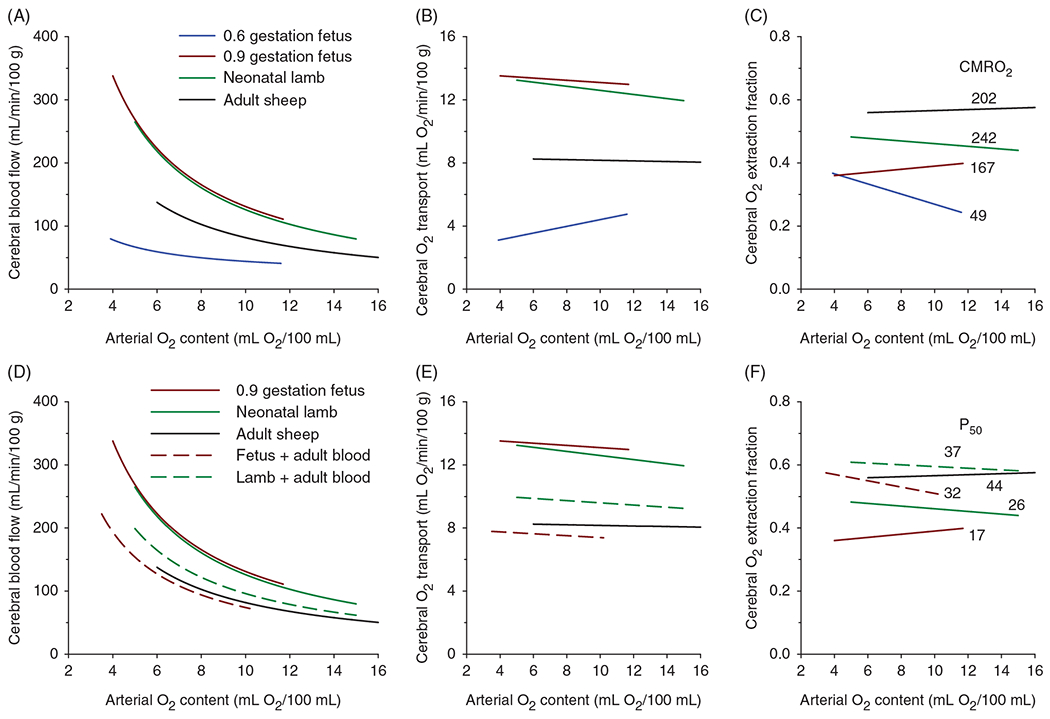Figure 27.

Developmental changes in the cerebrovascular response to hypoxia in unanesthetized sheep. (A) Over a wide range of arterial O2 content, cerebral blood flow (CBF) increases from 0.6 gestation to 0.9 gestation in fetal sheep, remains elevated after birth, and then decreases in adults. (B) At 0.6 gestation, the increase in CBF is inadequate to maintain cerebral O2 transport, whereas the O2 transport is maintained later in development during hypoxia. (C) O2 extraction fraction, which is the ratio of CMRO2 to O2 transport, is also maintained during hypoxia later in development, although the level is highest in adults and lowest at 0.6 gestation. The levels of O2 extraction fraction differed among groups despite normalization with the different levels of CMRO2 (indicated as μmol O2/min/100 g). (D-F) Fetal sheep at 0.9 gestation and neonatal lambs underwent a partial exchange transfusion with adult sheep blood having a P50 (PO2 at 50% oxyhemoglobin saturation) of 44 Torr to increase the P50 from 17 to 32 Torr in fetal sheep and from 26 to 37 Torr in neonatal lambs. Compared to the pretransfusion responses to hypoxia, the CBF and O2 transport responses were reduced, and the O2 extraction fraction was elevated to levels closer to those seen in adult sheep. Source: Adapted, with permission, from Koehler RC, et al., 1986 (228), 1984 (230); Gleason CA, et al., 1990 (161); Rosenberg AA, et al., 1986 (382).
